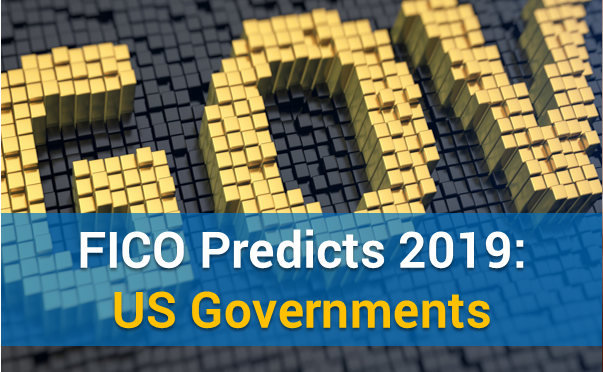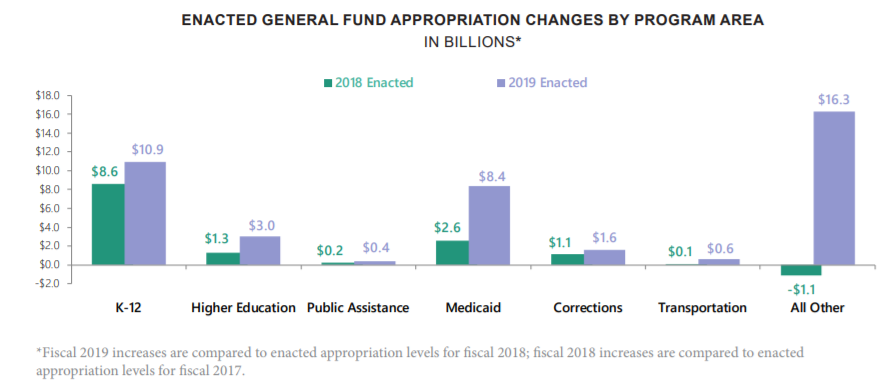Government Predictions 2019: Automate, Enhance and Secure
Blog: Enterprise Decision Management Blog

U.S. Government Predictions 2019: Now that we have completed the 2018 election season, people are asking what is in store for 2019. The good news is that revenues look strong, but there are a number of factors if you look deeper into the numbers. Also, while often the first year of a legislative session occurs before our political leaders are thinking about re-elections, election cycles have apparently gotten longer, because for many American politicians, the 2020 election season has already begun.
Tight Budgets Despite Increases In Overall Spending
While the National Association of State Budget Officers has reported a healthy 4.3% increase in general fund spending, most of that new money is going to three places: Medicaid, K-12 education, and pension obligations. This will likely squeeze out revenue increases in virtually all other areas. Government will carefully scrutinize any new spending, and will be looking for proverbial “singles”, rather than “home runs”. They will look for opportunities to quickly implement small improvements rather than embarking down multi-year, multi-million dollar projects.
Within this context, government will be looking for opportunities to enhance the IT systems they already have. They will likely look favorably at new capabilities that increase their prior investments and get additional functionality without major new initiatives. This will include looking towards analytics as a way to deliver government services in a more efficient manner. Through the use of optimization tools, government can identify opportunities to enhance customer service and performance outcomes without increasing staff requirements.
Continued Pension Challenges Drives Government HR Policies
In what may be one of the most under-reported government news stories of the year, Moody’s reports unfunded state pension liabilities have now increased to $1.6 trillion, up from $1.3 trillion just a year before. To put this in perspective, every American would have to give approximately $4,800 to cover this deficit. Another way to look at it is that if Illinois abandoned all state funding (police, K-12 education, prisons, etc.) for the next six years, and took 100% of their current tax revenue and allocated it 100% to its pension fund, the state would still be underfunded for their promised payouts.
Within this environment, states are going to need to look towards significant changes, including changing the structure of their plans (especially for new hires), increasing the amount of money placed into their pension funds. In most cases, state’s cannot reduce payments to retirees, they are typically guaranteed to the retiree through the state’s constitution. Some states have greater flexibility to reduce their Other Post-Employment Benefits (OPEB), most typically healthcare subsidies for retirees. The existing OPEB liabilities for states are estimated to be $692 Billion, as of 2015.
Within this environment, government will be looking for solutions that provide enhanced service without adding additional staff which would incur new pension liabilities. This may include automating currently manual processes, outsourcing back-office or service functions to private businesses, or eliminating services that are deemed non-essential.
Enhanced Customer Service Delivered Through Self-Service
Within the context of these pension challenges, government will continue to look for solutions which reduce the dependency on government staff to provide public-facing services. These could include novel approaches to support infrequent interactions, by automating currently manual processes.
For example, look for governments to move away from traditional license renewals, which require citizens to mail applications and fees to ones with automate renewals using stored payment mechanisms. Imagine if rather than getting a renewal form in the mail, and having to mail a check for a motor vehicle registration, the government simply emailed the car owner, and said they were going to take payment from the same source as the previous year unless the individual went to the website and asked for a change.
This would dramatically reduce the effort for both the car owner and the government. In addition, delinquencies would go down, further reducing government effort and cost. The need to continue to deliver services at a lower marginal cost while increasing customer service will drive innovating the interaction between government and citizen.
This process reengineering includes putting more capabilities on the Internet, allowing citizens to interact in a fully automated fashion with the government. Most citizens, especially those under the age of 40 would prefer to do their business without going to a government office or talking with someone on the phone. Reducing person-to-person interactions will enhance customer service, while reducing the cost of the service and the dependence on government staff
Security Concerns Will Lead To Tighter IT Controls
Last year there were literally billions of records lost in data breaches. Just the top 10 data breaches resulted in over 2 billion records lost. The public is demanding improvements, and government agencies, which holds numerous highly sensitive data sources, will have to react. Government will demand both more security for its systems, along with more security from vendors where they provide data. Government is also likely to demand more assurances that the receivers of government data are keeping that data secure. This will include cloud providers and vendors who receive data files.
Government will also likely increase their requirements for cyber insurance. Agencies will also demand that their partners provide more definitive proof as to their security posture. Cyber insurance companies will also want to better understand the risk of their policies. This will require analytical measurements and tools to better assess the threat, and continually watch for new threats.
Understanding what drives government will help all of us better provide the solutions they need. Follow me on LinkedIn if you would like to connect or to keep up with my latest industry thoughts.
Happy New Year!
The post Government Predictions 2019: Automate, Enhance and Secure appeared first on FICO.
Leave a Comment
You must be logged in to post a comment.









